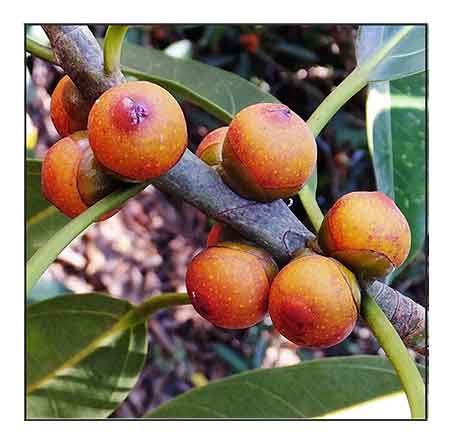
Family • Moraceae
Baleteng-kapalan
Ficus crassiramea (Miq.) Miq.
COLLARED FIG
| Scientific names | Common names |
| Ficus crassiramea (Miq.) Miq. | Baleteng-kapalan (Tag.) |
| Urostigma crassirameum Miq. | Collared fig (Engl.) |
| Accepted Infraspecifics | Strangling fig (Engl.) |
| Ficus crassiramea subsp. crassiramea | |
| Ficus crassiramea subsp. stupenda (Miq.) C.C.Berg. | |
| Ficus crassiramea (Miq.) Miq. is an accepted name. KEW: Plants of the World Online | |
| Other vernacular names |
| BORNEO: Kayu ara, Karak kijang. |

September 2022
![]()
 |
PHOTOS / ILLUSTRATIONS |
| IMAGE SOURCE: Photograph: Ficus crassiramea --fruiting branches / Ria Tan / click on image teo go to source apage / CC by NC-SA / Useful Tropical Plants |
| OTHER IMAGE SOURCE: Photograph: Ficus crassiramea -- closeup of fruits / Tg Aru beach / Copyright © Anthea Phillipps / click on image to go to source apage / Non-Commervial Use / THE FIGS OF BORNEO |
Additional
Sources and Suggested Readings |
• |
DOI: It is not uncommon for links on studies/sources to change. Copying and pasting the information on the search window or using the DOI (if available) will often redirect to the new link page. (Citing and Using a (DOI) Digital Object Identifier) |
| List of Understudied Philippine Medicinal Plants |
• |
 |


